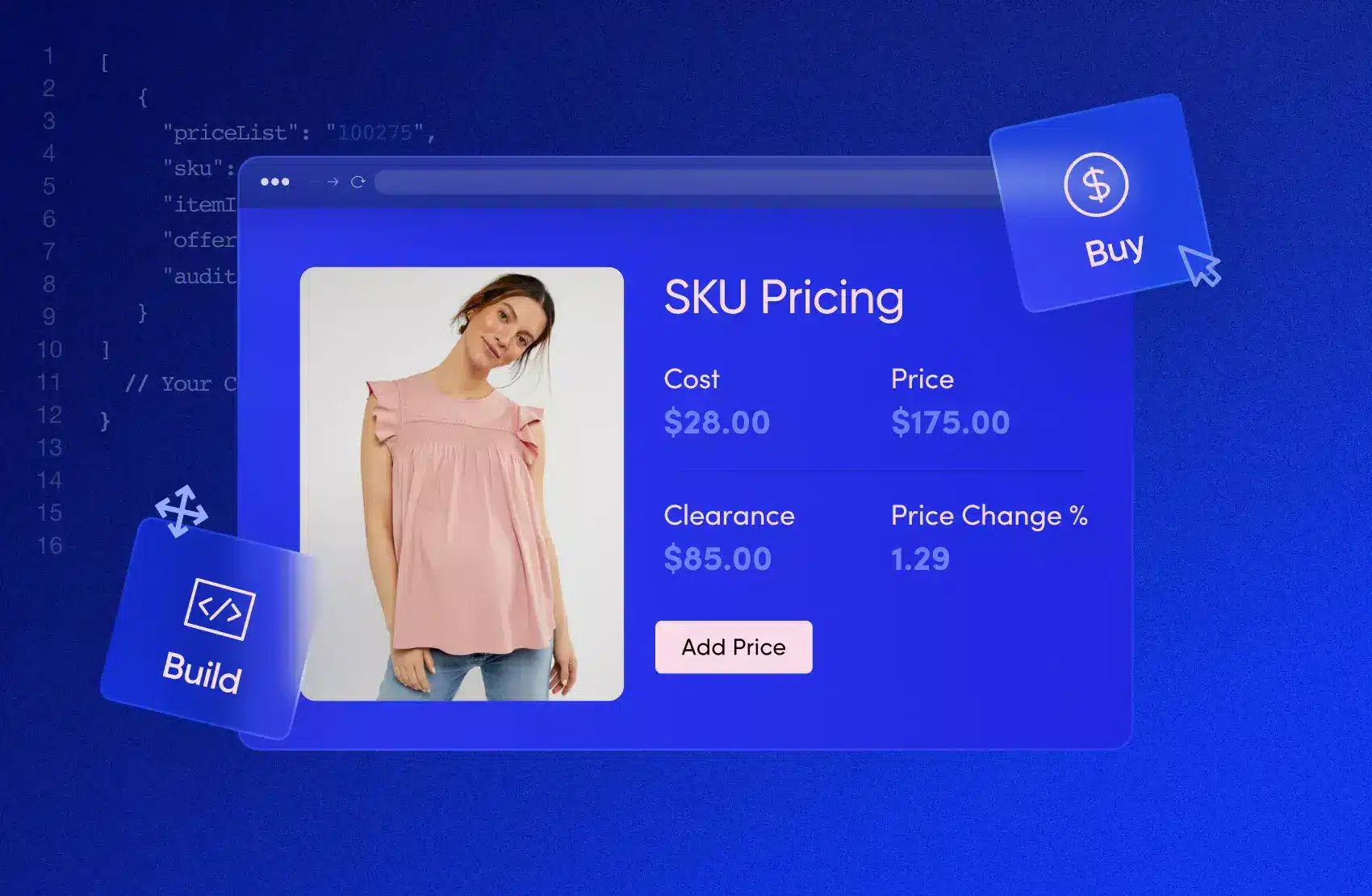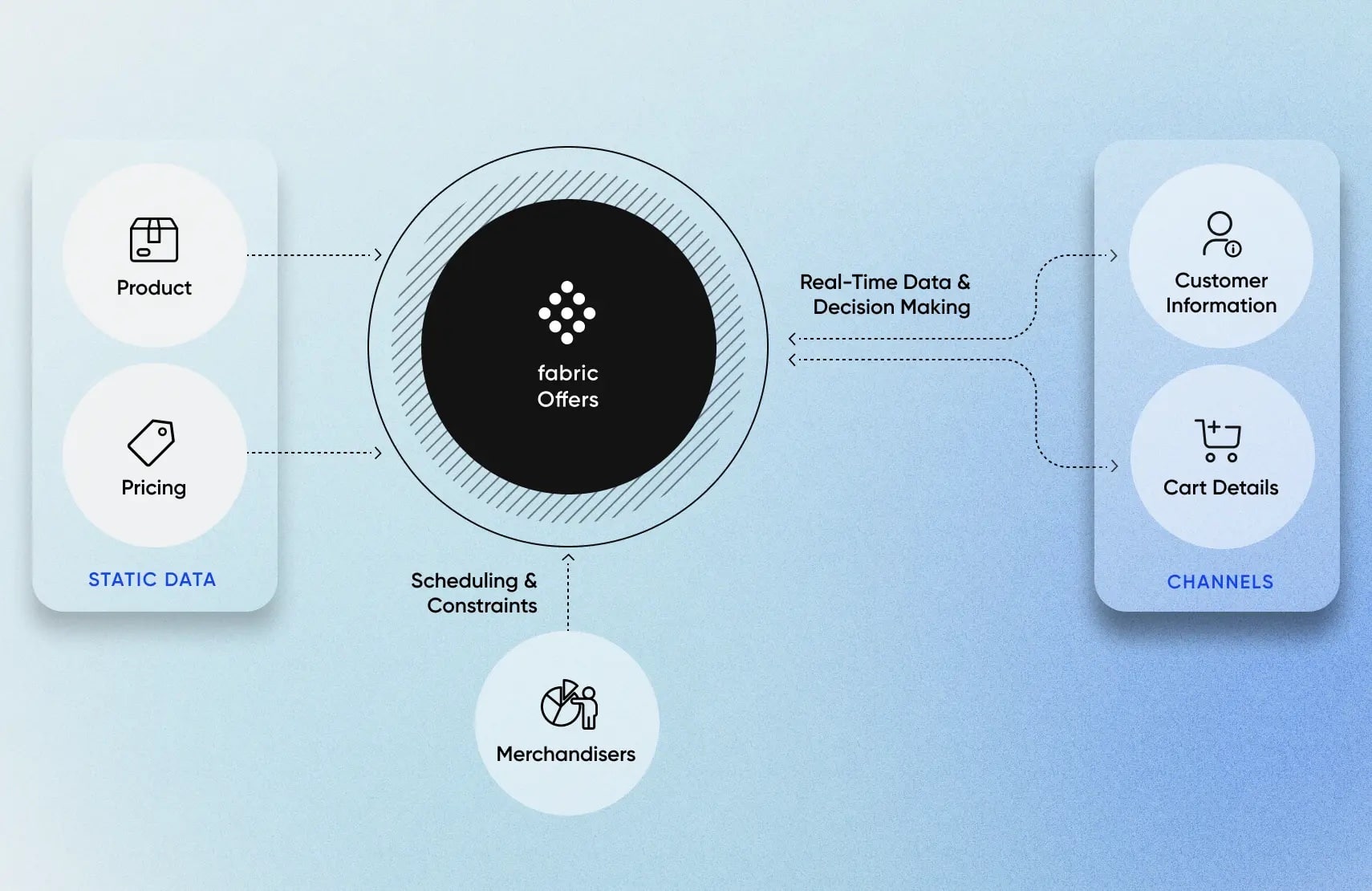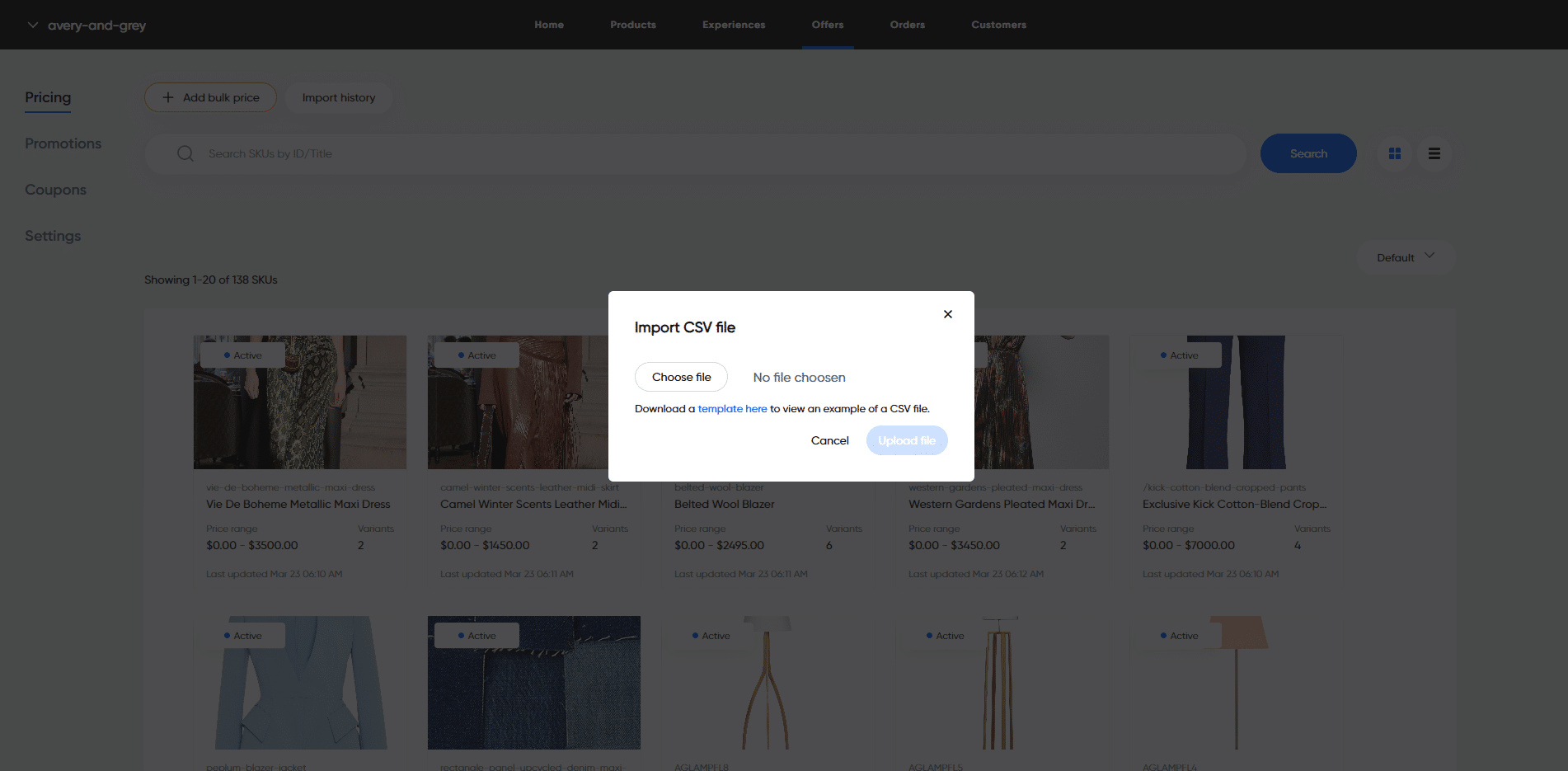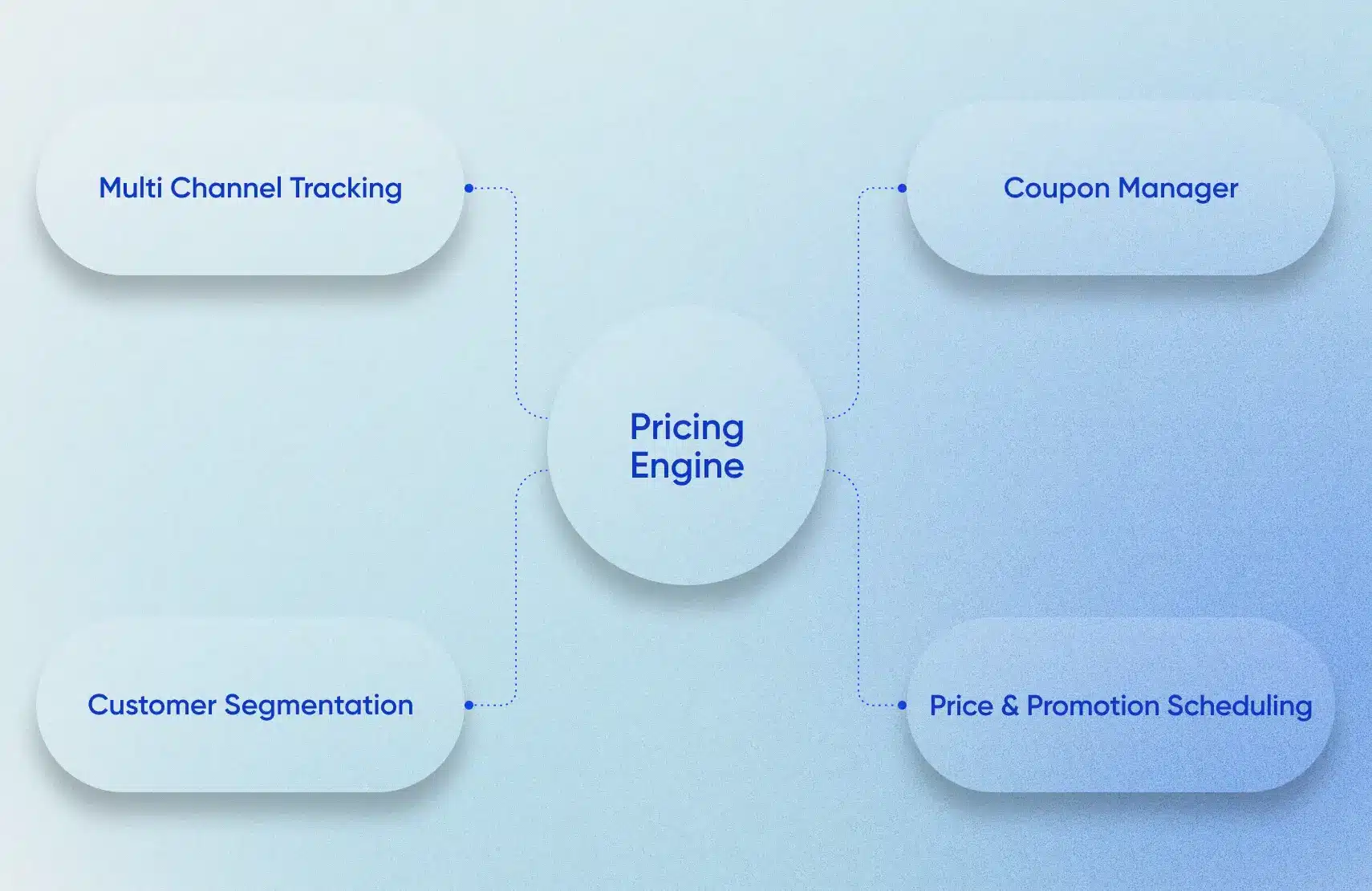Building vs. Buying a Pricing Engine for Your E-Commerce Business

When deciding whether to build or buy a pricing engine for your e-commerce business, it’s important to weigh the pros and cons of each approach.
Building a pricing engine in-house provides more customization and control, but requires significant investment of resources and expertise.
Buying a pricing engine provides quick deployment, advanced features, and reduced risk, but also has drawbacks like lack of customization and high potential costs for licensing and subscription fees.
fabric Offers is a headless pricing and promotions engine that combines the flexibility and customizability of building a solution and the convenience and feature-rich capabilities of buying a solution.
Software engineers working in e-commerce are frequently faced with the decision of building or buying a pricing engine. While developing a pricing engine in-house may appear to be the ideal option, it frequently necessitates a significant investment of resources.
In most cases, buying third-party software lets you get your products into the hands of consumers faster and generally ensures that the software will have more extensive support throughout its lifecycle. Whether you choose to develop a solution in-house, utilize third-party software, or take a hybrid strategy powered by APIs, one of the first steps is to understand the basic and advanced requirements of a pricing engine to ensure it aligns with your business needs and goals.
In this post, you’ll learn about the concept of a robust pricing engine and the technical decisions you’ll need to consider if you decide to develop your own. We’ll also go over things to look for if you decide to utilize third-party software.
[toc-embed headline=”What is a Pricing Engine?”]
What is a Pricing Engine?
A pricing engine is highly interoperable software that allows you and your customers to request accurate pricing from any external system at lightning speed and in real time. A pricing engine communicates with any external system, including point of sale (POS) systems, mobile applications, and online stores. This provides you with an interface to control product pricing centrally and allows customers to make real-time price-check requests.
fabric Offers is a dynamic pricing, promotions, and coupon engine that provides a single UI to run your pricing and promotions strategies.
[toc-embed headline=”Building a Pricing Engine”]
Building a Pricing Engine
Pros:
- Customization: A pricing engine built in-house can be tailored to fit a company’s unique pricing strategy.
- Control: Building a software solution from scratch can often give a business more control over its functionality.
- Cost: Depending on its complexity, a simple pricing engine built in-house may be cheaper initially. Buying or licensing a pricing engine will come with additional costs, such as maintenance and subscription fees.
Cons:
- Resources: Building any software solution from scratch can be time-consuming and resource-intensive for a business.
- Risk: Lack of expertise could result in a poorly-built product that leads to costly fixes, down time, and lost revenue. Sub-optimal pricing engines encounter scaling issues for traffic surges, such as increased traffic for Black Friday sales, flash sales, etc…
- Limited features: Businesses often want, but may not have access to, the latest and greatest features that third-party SaaS providers offer.
- Maintenance costs: Costs to build and maintain a high-performing and robust pricing engine are high. Estimates for the cost of software maintenance range from 40% to 90% of the total cost of ownership (TCO).
[toc-embed headline=”Buying a Monolithic Pricing Engine”]
Buying a Monolithic Pricing Engine
Pros:
- Speed: Buying a pricing engine allows for quick deployment and often without the need for technical development work.
- Advanced features: Third-party SaaS providers offer the most advanced features and capabilities, such as dynamic pricing and promotions, and creating custom coupons, that may be challenging to develop in-house.
- Less risk: Buying or licensing a solution from a trusted third-party vendor can reduce the risks that retailers face when building software from scratch.
Cons:
- Lack of customization: Pricing engines from SaaS vendors may not be as customizable to suit your business’ specific needs.
- Potential costs: These can include upfront costs, licensing fees, and subscription fees.
- Dependency: Businesses must rely on the SaaS provider for updates, maintenance, and support.
[toc-embed headline=”Choosing the Best of Both Worlds”]
Choosing the Best of Both Worlds
The decision to build or buy a pricing engine will depend on the specific needs and resources of a business. While building a pricing engine in-house may provide greater customization and cost savings, it may be more time-consuming and risky. On the other hand, purchasing a pricing engine from a vendor may provide quick deployment, advanced features, and reduced risk, but may be less customizable and involve higher costs.
A third option is for companies to consider a headless pricing engine. Instead of building a solution from scratch, or purchasing a monolithic, out-of-the-box solution, businesses have the ability to combine the best of both worlds with a headless SaaS solution powered by APIs.
When purchasing a pricing engine powered by APIs, you are essentially leveraging pre-built software components that provide the functionality of a pricing engine, but in a more flexible and customizable way. This approach offers the convenience of buying a pricing engine with its pre-built features and capabilities, and the flexibility of building your own pricing engine by leveraging APIs that allow you to customize and configure the solution according to your specific needs.
For example, APIs allow you to integrate your pricing engine with other software systems, enabling you to leverage a wide range of features and capabilities that are not included in the pre-built solution. It opens up many more possibilities and allows you to create a pricing engine that is tailored to suit your specific business needs.
[toc-embed headline=”Features of a Robust Pricing Engine”]
Features of a Robust Pricing Engine
As a developer, you have the option of building your own pricing engine, paying for out-of-the-box software, or paying for a headless solution powered by APIs. However, before diving into the technical and business trade-offs you’ll face when deciding between these options, it helps to go over some of the requirements businesses may want in a pricing engine:
- Dynamic pricing: This involves real-time price calculations to deliver personalized and competitive prices for specific customers. A robust pricing engine will incorporate the latest information to evaluate promotions and calculate prices instantly and should support complex promotional strategies.
- Price lists: A price list is a collection of items and their assigned prices. Price lists give you more control over your items for sale and let you set currency and duration of prices. For example, if the price list expires, prices of items within the price list will also expire.
- Price protection: It’s important to have protection mechanisms that can guard against any further creation of prices for specific items. Businesses should be able to create and manage more diversified price-kinds for items, such as manufacturer suggested retail price (MSRP), minimum advertised price (MAP), floor price, ceiling price, clearance price, and more.
- Product datasets: This involves the metadata and infrastructure required to describe the products. Examples include product prices (cost, base, sale), product attributes, categories, collections, and promotion inclusions/exclusions.
- Bulk and clearance pricing: Quantity based pricing allows you to set a different unit price based on the number of units purchased and is often used to encourage large volume orders. Clearance pricing is used to note the lowest price an item can be sold for. Ideally, these discount calculations should be automated by the pricing engine and displayed across all channels.
[toc-embed headline=”More Pricing Engine Factors to Consider”]
More Pricing Engine Factors to Consider

Use cases
Pricing, repricing, promotion scheduling, and shipping discounts are fundamental use cases for a pricing engine. A robust pricing engine helps you optimize prices based on objective data and shows the proper prices across all channels in real-time for shoppers to see.
Additionally, a pricing engine should have the ability to schedule future pricing for promotional discounts, and separate customers and shipments into segments. As a result, you can meet market demand with promotions while improving your delivery plan.
Maintenance and cost trade-offs
If you’re considering developing a pricing engine in-house, make sure you are prepared to shoulder the work by designating enough developers to fix bugs and add new features over time.
One of the popular benefits of using a third-party pricing engine is that you won’t have to deal with the technical support and maintenance that comes with continuous feature requests and maintenance. Costs can be lower, there are no unexpected challenges on the development side, and the software is ready to use.
Deployment speed and flexibility
In-house software development can often be delayed by never-ending feature requests and redesigns. Therefore, if you value deployment speed in your pricing engine, making use of a third-party solution is a better option. Some pricing engines also allow you to develop unique customizations on the platform that will accelerate deployment, give more flexibility, improve processing time, and provide the assurance of a predetermined timeline.
[toc-embed headline=”Options When Building or Buying a Pricing Engine”]
Options When Building or Buying a Pricing Engine
Whether you decide to build your custom pricing engine, buy one from a third-party vendor, or take a hybrid approach, it helps to know how the technical components of a pricing engine work. Below is some general technical knowledge that may be useful when making a decision.
Multichannel integration
Multichannel integration is a term that refers to a platform’s interaction with multiple channels to transmit and receive data. A multichannel integration can be achieved using a technical approach, like REST APIs. REST (Representational State Transfer) API is an architectural style for designing networked applications where resources are accessed and manipulated using standard HTTP methods (GET, POST, PUT, DELETE) in a stateless manner.
The REST API is the most frequent approach for linking software services in a distributed system because it provides a flexible, lightweight way to combine many applications. It is commonly used to allow apps and devices to connect and communicate with one another. A third-party provider which utilizes the REST API can efficiently integrate your pricing engine across multiple channels as well.
Data modeling
Data modeling is the process of designing a graphical representation of a system and the data elements it contains using text and symbols to represent the data and how it flows. It also serves as a guide for creating a new database or redesigning an existing one.
Most importantly, data modeling assists product development in effectively using its data to meet business needs. The price of a product will fluctuate based on the discount rule it falls under. Additionally, to suit the needs of international customers, a data model should support multiple languages and currencies.
Internal access
A pricing engine must have an interface that allows the in-house team to manually manage the data. This interface should only allow registered users to access the pricing engine internally. Whitelisting IP addresses and/or creating admin accounts with relevant roles and permissions can ensure secure internal access to the system.
Cross-platform consistency
Cross-platform consistency involves making a similar set of functionality available on multiple platforms. It can be readily achieved by building or buying a price engine with a web-based user interface. A pricing engine on the web can maintain its design and functionality while permitting users to access it from anywhere in the world.
Management of pricing updates
When it comes to e-commerce, prices change regularly, and tracking the prices of a large number of products can be overwhelming. As a result, it’s beneficial to ensure that the pricing engine you build or buy can effectively handle the pricing of all products.
For example, businesses should have the ability to manage prices across price-lists, including assigning different prices to the same item, setting the currency and duration of prices, or including default prices when the pricing of an item expires.
Bulk pricing
With thousands of products on most e-commerce platforms, trying to modify pricing one by one can be a tedious experience. This is where bulk pricing comes in. With bulk pricing, you can define a condition and alter the pricing of all products that fit that condition.
For example, a bulk price update is an efficient technique to manage pricing updates in a pricing engine. Bulk pricing can be used if you need to update the cost of all products that fall under a specific manufacturer. Or you can use it to update the price of all products with low stock quantities. In essence, bulk pricing is a must-have for a robust pricing engine and can be useful in a variety of situations.
Third-party vendors, like fabric, provide e-commerce platforms with a flexible approach to handling bulk pricing. Uploading a .CSV file allows users to set information including the cost, price, and clearance price of products.

Conditional pricing
Conditional pricing is related to managing pricing updates, but it focuses on creating pricing rules based on factors, like the quantity, the set of products purchased, or the customer’s percentage of shop transactions.
A good example of conditional pricing is a condition that reduces the price of a product by a specific percentage when more than a certain number of units of a product are purchased all at once by the same customer. The condition could be based on country, city, or even product manufacturer. Having a pricing engine that can create flexible pricing conditions is a smart move since it allows you to determine the optimal pricing for your products and, in turn, increase sales.
[toc-embed headline=”Conclusion”]
Conclusion
Before deciding whether to build, buy, or go headless with a pricing engine, you must first understand what a robust pricing engine should be, some of its basic and advanced requirements, and the trade-offs that come with developing in-house from scratch vs. leveraging a third-party vendor.
Building a pricing engine in-house is a viable approach if you have an engineering team on standby and are willing to bear the burden of developing and, more importantly, maintaining a new software product. Making use of a monolithic third-party pricing engine can get you into the market faster but can also come with additional or unexpected costs.
Combining the best of both worlds is fabric Offers, which is a robust, headless pricing and promotions engine powered by APIs. It provides a simple user interface for you to add and update product pricing as a single entity and grouped entities. It also provides multichannel support, price and promotion scheduling, and a standard discount management system.
If you’d like to learn more, or if you’re looking to get started with a trial account and credentials, email us at [email protected] or visit our developer page here.
Tech advocate and writer @ fabric.
